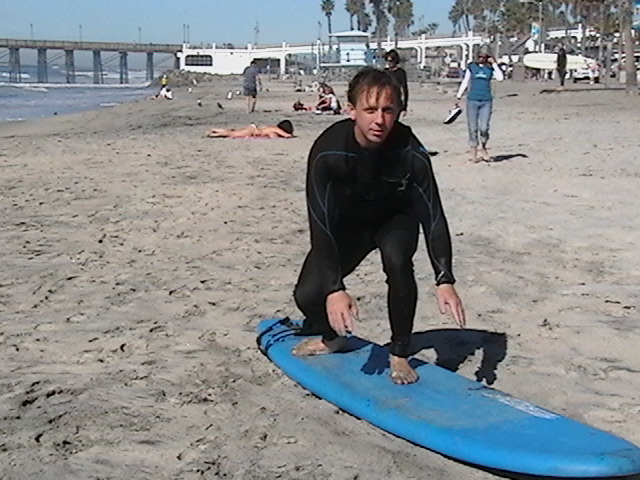4 Things Progressing Surfers Master
There are 4 things progressing surfers master on their road from beginners to experts.
Fitness

fitness techniques surfers master
There are three important parts of fitness for surfers. First is flexibility. When professional surfers visit my beach, I often see them warming up with yoga postures that look like live pretzels. Flexibility helps with techniques and reduces the likelihood of tweaks when you get twisted up on falls.
Surfers work on strength through cross training. Most professionals surf for a few hours and work in the gym for a few hours a day. Upper body, core, and leg strength are all important in technique advancement. Strength also creates stamina. Iron man coaches suggest lots of gym work because when the body is tired, strength will pull you through.
Finally, you cannot minimize the value of nutrition. Body builders say you must eat to build muscle. Runners emphasize a good balance of carbs and protein and fat. Surfing can include fuel before entering the water and recovery food after burning muscle while in the water. Surfing is more demanding than beginners realize and I find that cross training and nutrition are important for longer sessions.
Wave Catching
Beginners learn to catch foam waves. It is easy to let the foam wave hit the board from behind, but it takes timing to paddle hard before the wave arrives and while the wave is pushing the board. After the board is in front of the foam wave, the surfer can begin the pop up. This is discipline and patience.
As surfers learn to catch real waves, they have to intersect the forming wave at the right time depending often on volume of the board they are riding. A high volume long board moves before a low volume short board. A steep wave needs different timing than slow rolling waves. Waves that are too steep at the apex or closing out can be caught at the corners.
Recognizing the type of waves on a sand bar beach is more difficult than surfing reefs where wave usually break in the same spot and form more uniformly. Timing becomes the important variable and one never gets too good at timing.
Riding the Surf Boards
Riding certainly distinguishes the beginners from the experts. What progressing surfers have to learn is patience and the need to continuously practice. As progressing surfers start advancing in their wave catching, they will want to start adding techniques to their wave riding.
Riding varies from riding straight down the face, to carving into the pocket and driving a wave, to making lots of maneuvers. Long boards drive pockets and make swiveling turns from moving back and forth on the boards. Short boards make sharp cuts from moving your weight on the board.
Surfers learn waves and when to gain speed, when to carve, to perform tricks, when to bail out over the lip, and when to turn to shore. Each time you go into the water, you should have some idea of what you want to practice.
Courage
Surfing is not for the faint of heart. Beginners learn immediately that the water is far more powerful than their ability to ride if their technique is not right. Nature offers up the power, but like judo, you have to learn how to use it or the results can be hurtful.
Most pros will say they were intimidated each time they ventured to bigger waves. Pros riding Mavericks or Pipe Line will say they have fear when they go out. The secret is to learn to manage it not make it disappear.
Managing fear is assisted with the right habits of fitness and techniques. Preparing in all aspects mentioned above makes us more skillful and more brave.
*
For Surf Lessons in Oceanside, see the Home Page